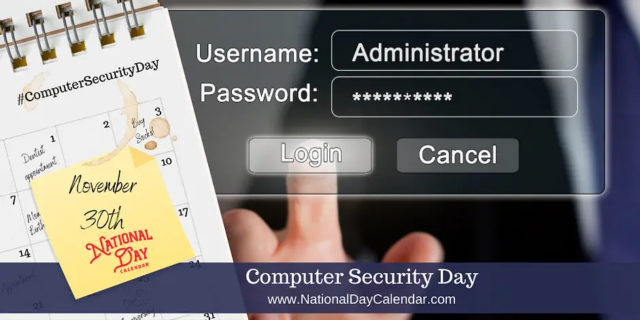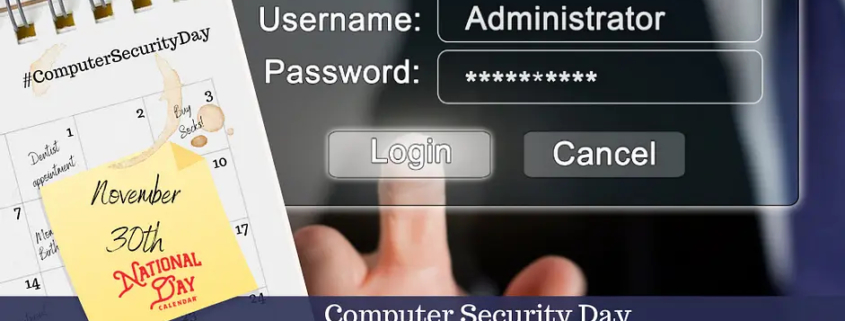Hackers Attack Every 39 Seconds, On Average 2,244 Times A Day.

Computer Security Day on November 30th reminds us to protect our computers. Every day, computers become faster and more advanced. Protecting the resources, tools, and information on them protects the people who use them, too.
- Computer Security Day began in 1988, around the time that computers were becoming commonplace, even if they were yet to become ubiquitous in homes.
- One very important thing to do for your online security is to have strong passwords and keep them updated regularly, as this reduces the chances of your personal data falling into the wrong hands.
- Since COVID-19, the US FBI reported a 300% increase in reported cybercrimes
- More than 93% of healthcare organizations have experienced a data breach over the past three years
- The number of cyber attacks is going UP not down. Though white hat hackers continue to improve, the total number of cyber attacks doubled in 2017. That’s according to the Online Trust Alliance (OTA), which has named 2017 “the worst year ever in data breaches and cyber-incidents around the world.”
- 91% of cyber attacks in 2017 started with a phishing email.
- 62% of businesses experienced phishing and social engineering attacks in 2018.
- Cyber-crime damages will cost the world $6 trillion annually by 2021, up from $3 trillion just a year ago.
- Financial organizations are the biggest targets of cyber attacks.
- Mortgage companies are the #1 target in the industry because of the treasure trove of information that they require from customers.
- 93% of breaches could have been avoided by taking simple steps, such as regularly updating software or leveraging modern cloud based solutions.
- Only 5% of companies’ folders are properly protected, on average.
- Between January 1, 2005 and April 18, 2018 there have been 8,854 recorded breaches.
- Security breaches have increased by 11% since 2018 and 67% since 2014.
- Hackers attack every 39 seconds, on average 2,244 times a day.
- 64% of Americans have never checked to see if they were affected by a data breach.
- 56% of Americans don’t know what steps to take in the event of a data breach.
- In 2016, 3 billion Yahoo accounts were hacked in one of the biggest breaches of all…
